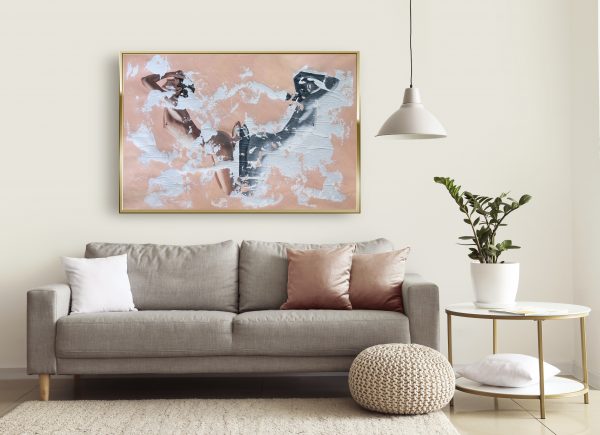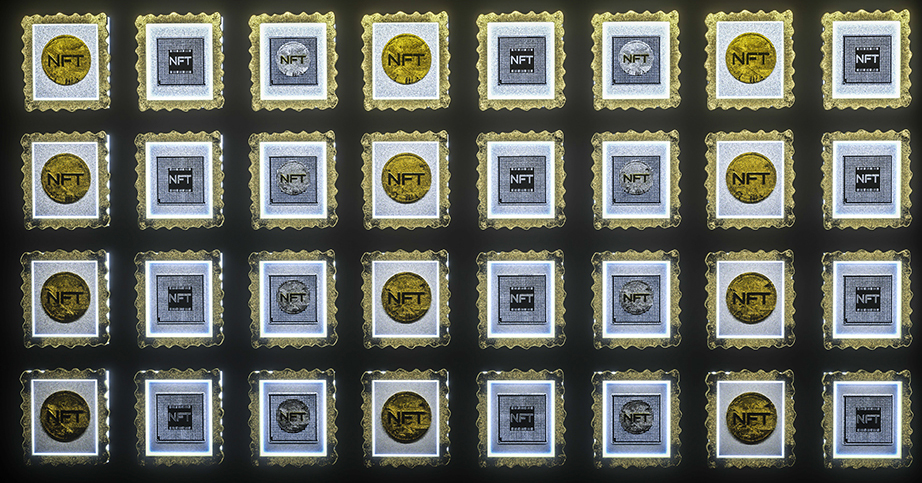
- Introduction
- The Advantages of Selling Art Online
- Choosing the Right Platform to Sell Art Online
- Showcasing and Describing Your Artwork for Successful Online Sales
- Building Your Online Presence
- Optimizing for Search Engines
- Marketing and Promoting Your Artworks to Drive Online Sales
- Handling Transactions and Shipping
- Building Customer Relationships to Sell Art Online Successfully
- Monitoring Performance and Making Adjustments
- Conclusion
- FAQs
Introduction
To sell art online has become an increasingly popular avenue for artists to showcase their talent and reach a global audience. With the rise of online art marketplaces and the convenience of e-commerce, artists now have a platform to connect with art enthusiasts from all around the world. In this article, we will explore the advantages of selling art online, discuss the steps involved, and provide useful tips for success.
The Advantages of Selling Art Online


Selling art online offers several advantages that traditional offline methods often struggle to match. Let’s explore some of the key benefits:
1. Reach a Global Audience: Expanding Your Artistic Reach by Selling Art Online
One of the most significant advantages of selling art online is the ability to reach a global audience. By listing your artwork on popular online art marketplaces as Saatchiart, you can showcase your creations to potential buyers from different corners of the world. This global exposure increases your chances of finding the right buyer who appreciates your artistic style.
2. Low Overhead Costs
Compared to physical art galleries or exhibitions, selling art online comes with lower overhead costs. You can save on expenses such as renting a physical space, transportation, and gallery commissions. Online platforms typically charge a smaller fee or commission, allowing you to retain a larger portion of your earnings.
3. Direct Interaction with Buyers
When you sell art online, you have the opportunity to directly interact with potential buyers. This direct communication allows you to build a personal connection, understand their preferences, and provide additional information about your artwork. Establishing a relationship with buyers can lead to repeat sales and referrals.
4. Opportunities for Collaboration: Joining Forces with Fellow Artists to Sell Art Online
Online art communities and forums provide opportunities for collaboration and networking with other artists. Collaborative projects, joint exhibitions, or shared promotional activities can help you expand your reach and gain exposure to a wider audience. Building connections within the online art community can be beneficial for your career growth.
Choosing the Right Platform to Sell Art Online
Selecting the right online platform is crucial for successfully selling your art. Consider the following factors when choosing a platform:
1. Researching Popular Online Art Marketplaces
Start by researching popular online art marketplaces. Look for platforms that have a significant user base and a strong reputation in the art community. Read reviews, compare features, and assess the platform’s suitability for your artistic style and goals.
2. Evaluating the Platform’s Features and Policies
Carefully evaluate the features and policies of each platform. Consider factors such as ease of use, customization options, payment processing, and customer support. Ensure that the platform aligns with your requirements and offers a positive selling experience for both you and your buyers.
3. Considering Pricing and Commission Structures: Maximizing Profits when You Sell Art Online
Take into account the pricing and commission structures of different platforms. Some platforms charge a flat fee per listing, while others deduct a commission from each sale. Evaluate the cost-effectiveness and profitability of each platform to make an informed decision.
Showcasing and Describing Your Artwork for Successful Online Sales
Once you’ve chosen the right platform, it’s time to showcase your artwork effectively. Follow these tips to make your art stand out:
1. High-Quality Visuals: Captivating Buyers with Stunning Artwork Images
Capture high-quality images of your artwork that accurately represent the colors, textures, and details. Invest in good lighting and use a high-resolution camera or hire a professional photographer if needed. Quality visuals can significantly impact a buyer’s decision to purchase.
2. Detailed Descriptions and Artistic Statements: Engaging Buyers through Compelling Art Descriptions Online
Provide detailed descriptions for each artwork, including information about the medium, dimensions, and any unique techniques used. Additionally, craft an artistic statement that communicates your creative inspiration and artistic philosophy. This helps buyers connect with your work on a deeper level.
3. Using Keywords and Tags: Optimizing Art Listings with Targeted Keywords to Sell Art Online
Incorporate relevant keywords and tags in your artwork titles, descriptions, and tags. Research keywords using tools like Google Keyword Planner or other SEO software. By optimizing your content for search engines, you can increase the visibility of your art to potential buyers.
Building Your Online Presence


In addition to utilizing online art marketplaces, it’s essential to build your online presence as an artist. Consider the following strategies:
1. Creating an Engaging Artist Website or Portfolio: Showcasing Your Art Online Effectively
Create a professional website or portfolio to showcase your artwork. Include a gallery, an about page, contact information, and links to your social media profiles. Your website acts as a central hub for potential buyers to learn more about you and your art.
2. Leveraging Social Media Platforms: Harnessing the Power of Social Media to Sell Art Online
Utilize social media platforms such as Instagram, Facebook, and Pinterest to share your artwork and engage with your audience. Post regularly, interact with followers, and leverage relevant hashtags to expand your reach. Social media can be a powerful tool for building your brand and attracting potential buyers.
3. Engaging with Online Art Communities and Forums
Join online art communities and forums to connect with fellow artists, share insights, and participate in discussions. Actively engage with the community by providing valuable feedback, supporting other artists, and sharing your knowledge. This not only helps you build relationships but also establishes you as an authority in your field.
Optimizing for Search Engines
Optimizing your online presence for search engines is essential for improving your visibility and attracting organic traffic. Consider the following SEO techniques:
1. Conducting Keyword Research
Research relevant keywords related to your art niche. Identify keywords that have a good search volume and reasonable competition. Incorporate these keywords naturally into your website content, blog posts, and social media captions.
2. Incorporating SEO Techniques in Title and Description: Boosting Online Art Sales with SEO Strategies
Optimize the title and description of your artwork listings with relevant keywords. Craft compelling and descriptive titles that entice potential buyers. Ensure that your descriptions are detailed, engaging, and accurately represent your artwork.
3. Generating Backlinks and Building Authority
Build backlinks to your website or art listings from reputable and relevant sources. Guest blogging, collaborating with influencers, and participating in online features or interviews can help you gain backlinks and build your authority as an artist.
Marketing and Promoting Your Artworks to Drive Online Sales


To increase the visibility of your artwork and attract potential buyers, implement effective marketing strategies:
1. Implementing Content Marketing Strategies: Engaging Buyers through Valuable Content
Create valuable content related to your art niche, such as blog posts, tutorials, or behind-the-scenes videos. Share this content on your website, social media platforms, and other relevant platforms. Content marketing establishes you as an expert and attracts a dedicated audience.
2. Collaborating with Influencers and Bloggers: Amplifying Your Reach
Partner with influencers and bloggers in the art and design industry to reach their followers. Collaborate on projects, promotions, or giveaways that expose your artwork to a broader audience. Influencer marketing can significantly boost your visibility and generate sales.
3. Utilizing Email Marketing and Newsletters: Building Connections and Driving Sales
Build an email list of interested buyers and art enthusiasts. Offer incentives such as exclusive discounts or early access to new artwork to encourage sign-ups. Send regular newsletters showcasing your latest works, upcoming exhibitions, or exclusive offers. Email marketing helps you nurture relationships with potential buyers.
Handling Transactions and Shipping
Ensure a smooth and secure transaction process for your buyers:
1. Secure Payment Gateways: Ensuring Safe and Smooth Transactions


Choose a secure and trusted payment gateway to process transactions. Provide multiple payment options to accommodate different buyer preferences. Display security badges and clearly communicate your data privacy and security measures to build buyer confidence.
2. Shipping and Packaging Considerations


Investigate different shipping options and select the most reliable and cost-effective method for shipping your artwork. Ensure that your packaging protects the artwork during transit and includes appropriate insurance. Provide accurate shipping estimates and transparently communicate shipping policies to buyers.
3. Dealing with Returns and Customer Service: Providing Support and Satisfaction


Establish a clear returns and refund policy to address buyer concerns. Promptly respond to customer inquiries, address issues professionally, and strive to resolve any problems satisfactorily. Excellent customer service builds trust and encourages repeat business.
Building Customer Relationships to Sell Art Online Successfully
Nurturing customer relationships is crucial for repeat sales and positive word-of-mouth:
1. Providing Exceptional Customer Service: Enhancing Satisfaction and Loyalty in Online Art Sales
Go above and beyond to provide exceptional customer service. Respond promptly to inquiries, communicate clearly, and ensure a smooth buying experience. Personalize interactions and make buyers feel valued and appreciated.
2. Offering Personalized Experiences: Connecting with Buyers on a Personal Level
Consider offering personalized experiences such as commissioned artworks, custom framing options, or personalized messages. Tailoring your offerings to individual buyers can create a unique connection and increase customer satisfaction.
3. Encouraging Reviews and Feedback: Building Trust and Credibility in Your Online Art Sales
Ask buyers to leave reviews and provide feedback about their experience with your artwork. Positive reviews and testimonials can strengthen your reputation and influence potential buyers. Encourage buyers to share their purchased artwork on social media, tagging your account.
Monitoring Performance and Making Adjustments
Continuously monitor your performance and make data-driven adjustments to improve your online art business:
1. Tracking Sales and Analytics: Leveraging Data for Growth in Online Art Sales
Regularly analyze your sales data and website analytics to identify trends, popular artworks, and customer preferences. Use this information to make informed decisions about pricing, inventory, and marketing strategies.
2. Analyzing Customer Behavior and Preferences
Understand your target audience by analyzing customer behavior and preferences. Identify patterns in their art choices, buying habits, and engagement levels. This insight helps you tailor your offerings and marketing efforts to better meet their needs.
3. Making Data-Driven Decisions
Base your decisions on data and performance metrics rather than assumptions. Experiment with different strategies, track their outcomes, and adjust your approach accordingly. Continually test and optimize to maximize your online art business’s potential.
Conclusion
Selling art online offers artists numerous advantages, including global reach, low overhead costs, direct interaction with buyers, and collaboration opportunities. By carefully choosing the right platform, showcasing and describing artwork effectively, building an online presence, optimizing for search engines, marketing and promoting artwork, handling transactions and shipping securely, building customer relationships, and monitoring performance, artists can successfully sell their art online. Embrace the digital landscape, explore various strategies, and adapt to the evolving needs of your target audience to thrive as an online artist.
FAQs
Q: What are the best online platforms for selling art?
A: Some popular online art marketplaces include Etsy, Saatchi Art, Artfinder, and Fine Art America.
Q: How can I increase the visibility of my artwork online?
A: Utilize social media platforms, implement SEO techniques, engage with online art communities, and collaborate with influencers or bloggers.
Q: How should I price my artwork?
A: Consider factors such as size, complexity, materials used, and your artistic experience. Research the market and set competitive yet fair prices.
Q: Should I offer prints or only sell original artwork?
A: Offering prints allows you to reach a wider audience and cater to different budgets. Selling both originals and prints can be a successful strategy.
Q: How can I protect my artwork from copyright infringement?
A: Register your artwork with copyright authorities, watermark your online images, and monitor for unauthorized use. Consult with a legal professional for further guidance.





